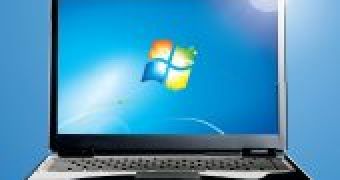Some customers attempting to deploy the first upgrade for Windows 7 have hit a bit of a problem, namely failed installations with the following error codes: 0x8004a029 or 0x80004005 - E_FAIL. The Redmond company confirmed the issues and indicated that it’s associated to Windows 7 Service Pack 1 (SP1) RTM upgrade scenarios.
According to the software giant, customers can either get 0x8004a029 or 0x80004005 - E_FAIL, but not both of the messages, although they are designed to point to the same glitch.
“This can occur if the number of installed network filter drivers exceeds the specified limit. By default, Windows 7 has a limit of 8, with a maximum allowable limit of 14,” Microsoft stated.
Microsoft advises customers to make a small change in the Windows 7 registry in order to resolve the issue.
Essentially, users will need to tweak the MaxNumFilters key in HKEY_LOCAL_MACHINE\SYSTEM\CurrentControlSet\Control\Network\.
Customers are warned that registry changes need to be performed only by those that know their way around Windows as they can easily create more problems, even severe glitches.
In this specific example, the default MaxNumFilters 8 decimal value needs to be pushed up to 14, which is the maximum allowed.
“If more than 14 filter drivers are installed, the above registry key will not alleviate the issue. In cases where more than 14 network filter drivers are installed, removing a number of the installed filter drivers should allow the service pack installation to succeed. Network filter drivers can be removed from the properties of the network connection in Ncpa.cpl,” the company revealed.
The Redmond company doesn’t advise customers to remove any of the default network filter drivers in Windows, such as “Client for Microsoft Networks, QoS Packet Scheduler, File and Printer Sharing for Microsoft Networks or any of the included Internet Protocol entries,” the software giant said.
“Examples of third-party network filter drivers would be firewall, QoS software or network virtualization software.”
Windows 7 SP1 RTM and Windows Server 2008 R2 SP1 RTM are available for download here.

 14 DAY TRIAL //
14 DAY TRIAL //